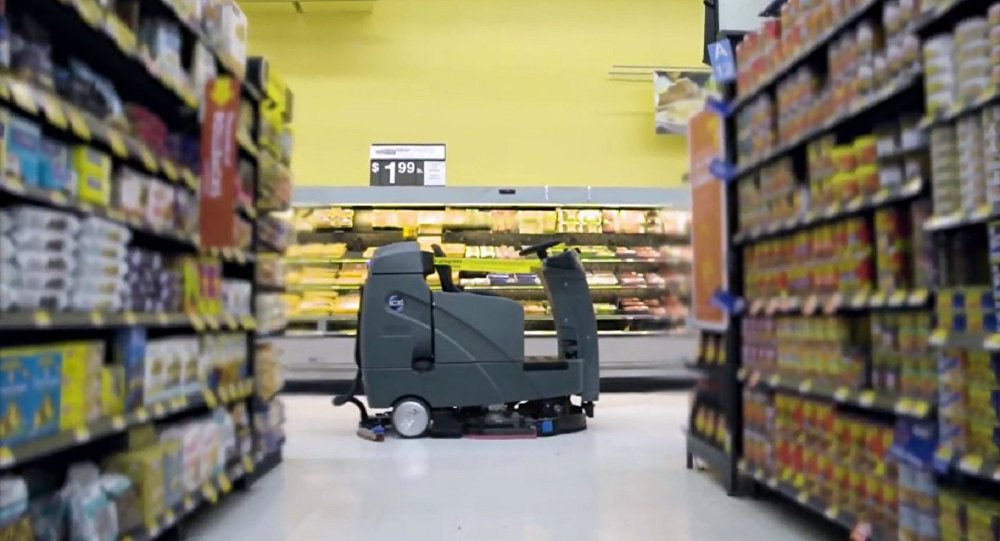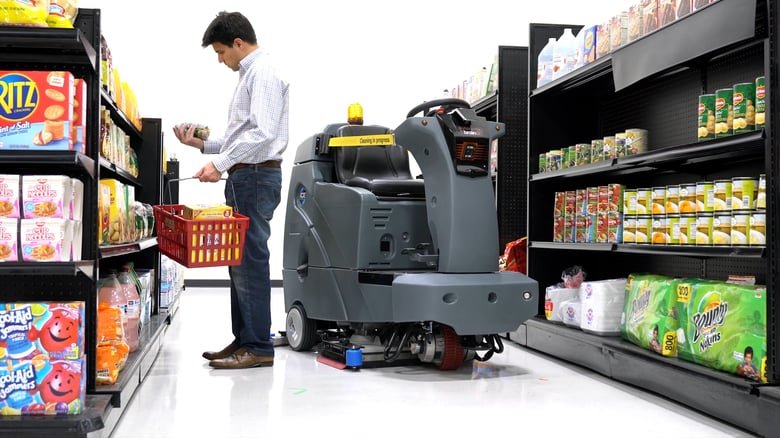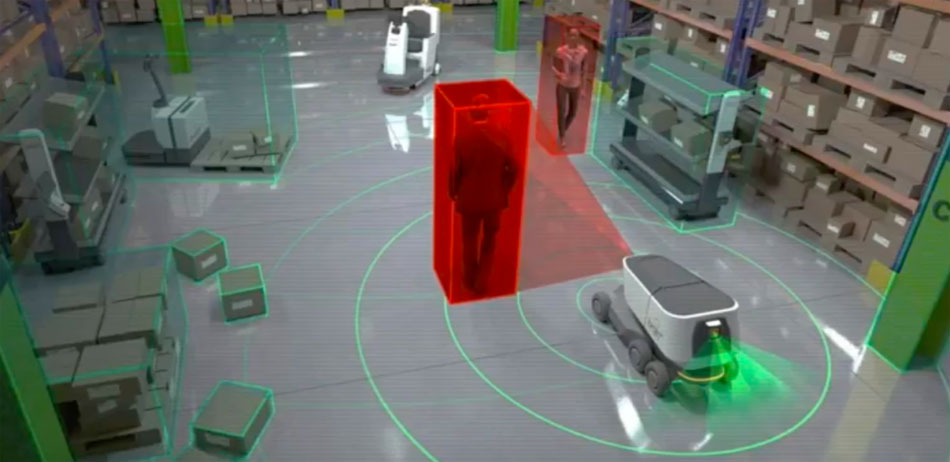Walmart begins to use cleaning robots

Feeling the imminent danger from Amazon, the world's largest retailer is introducing new technologies one after another . By the end of January, Walmart intends to install 360 autonomous robotic floor-cleaning robots in supermarkets across the country - in addition to the hundred units that are already being tested by the company. The retailer will be assisted by Brain Corp, the company that developed Brain OS, an artificial intelligence platform that controls the machines. It will allow cleaning robots not to encounter shelves and visitors, plus - to increase the efficiency of their work with each passing day.
So far, to put it mildly, Walmart does not expect any financial benefits from the new machines. The usual apparatus in which a person sits is almost an order of magnitude cheaper, not including the cost of development. In addition, so far each “autonomous” robot has two severe guards in yellow vests who monitor its behavior and dare any visitors who may have a desire to ride it.
The company expects this to be a temporary measure. The hope is that gradually customers will get used to the presence of such machines in supermarkets, and they will no longer be of interest. Plus, on top of each robot is a (visible) yellow siren. In the normal state, she quietly “beeps”, warning buyers that the robot is on, and they need to step aside. But if they try to do something illegal with the machine, the siren can roar. Then the guards from around the supermarket will come running to see what happened.
Floor cleaning is not the only task of Brain bots. Front, back and sides of them are sensors that collect information. Then it is transferred to the Walmart cloud platform ( powered by Micrososoft Azure). Machine learning, deep learning and computer vision help the system calculate which path through the store will be most effective. It takes into account the length of the route, the cleaning time, the probability of encountering visitors at a certain time of the day and the energy consumption of the route. Each subsequent lap the machine will do a little more efficiently, gradually starting to justify the investment.

Sensors in bots will also monitor which shelves are empty and send a signal to the server that they need to be filled. The technology has already been developed (though for other robots ), it remains to “insert” it into Brain OS. The same system identifies the wrong price tags for goods - if suddenly they did not have time or forgot to change them. And other machines, code-named Alphabot, quickly select and deliver the right products from stock.
The battle for mopping
Who is better at cleaning the floor, robot or human? Brain Corp says the answer is obvious. Machines operate much more accurately and efficiently, they do not miss sites and stably give the same result. Plus, gradually they will learn to go the most effective way, and even work at certain time intervals, without disturbing visitors.

As for what will happen to hundreds of thousands of American cleaners, Eugene Izikevich, founder of Brain Corp and an expert in computational neurobiology, hopes that they "will move on to other, more complex tasks." The speed of the machine for washing floors is only 3-4 km / h, and one store walk takes an average of five to six hours, so the driver’s talents are not as important as decency, attentiveness and efficiency. “And the cleaners will be able to do something more useful - for example, fill shelves or remove spoiled vegetables or fruits from trays.”

But, of course, it is most likely that such people just gradually need to start looking for another job. If the Walmart experiment is successful, each machine will replace at least three to four people. But in total, according to McKinsey estimates , by 2030, 400-800 million people will change their place of work because of robots.
All this, of course, is of little concern to Walmart, which this year reached a record turnover (more than $ 500 billion). Few believed that the company would be able to adapt to new market conditions so successfully. This year, Walmart even became the 3rd online store in the United States, beating Apple.com and Home Depot. Now it has 4% of the market (Amazon - 48%, eBay - 7.2%). Opening up from the main competitors is still large, but the growth rate is impressive.
Even we noticed that over the last year we began to buy at Walmart through us from Russia much more often. Amazon, 6PM and New Balance are still far from the indicators, of course, but the old man clearly does not give up without a fight, and the company's plans for the future are clearly very large.

